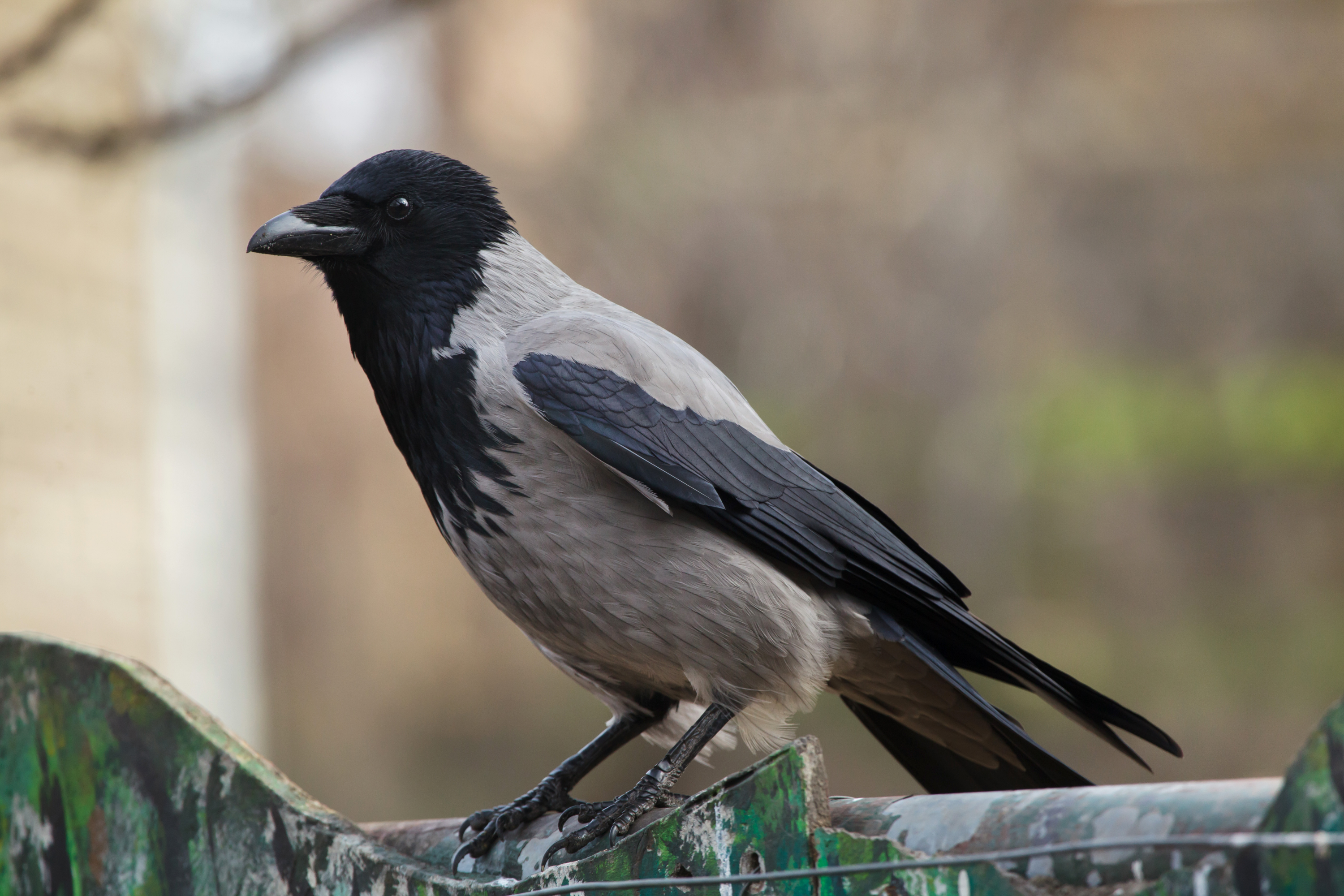Hooded crow
(Corvus cornix)

Description
Corvus cornix, commonly known as the hooded crow, is a bird of the Corvidae family, which includes other species such as ravens, magpies, and crows. The hooded crow is widely distributed across Europe and Asia, and it is known for its distinctive appearance, vocalizations, and behavior. In this article, we will explore the morphology, ecology, behavior, and conservation status of the hooded crow. Morphology: The hooded crow is a medium-sized bird that measures between 48-52 cm in length and has a wingspan of 93-104 cm. It weighs between 450-700 g, with males being slightly larger than females. The bird has a black head, wings, and tail, and a grayish body. The black coloration of the hooded crow distinguishes it from the carrion crow, which has an all-black appearance. The bill of the hooded crow is black, sturdy, and slightly curved. The eyes of the bird are dark brown, and its legs and feet are black. Juvenile birds are similar in appearance to adults but have duller plumage. Ecology: The hooded crow has a wide distribution range that covers Europe, Asia, and North Africa. It is a resident species in most of its range, but some populations in the northern parts of its range migrate southwards during the winter. The bird is typically found in open habitats such as farmlands, grasslands, heaths, and coastal areas. It is a common sight in urban areas where it feeds on human waste and scavenges in garbage dumps. Behavior: The hooded crow is a highly intelligent and adaptable bird that has a diverse diet. The bird feeds on a wide range of food items, including insects, small mammals, carrion, fruits, and seeds. It is known to use tools, such as sticks, to extract food from crevices and cracks. The hooded crow is a social bird that lives in pairs or small groups during the breeding season. The bird builds its nest in trees, shrubs, or on the ground, and it is made of twigs, grass, and other plant material. The female lays 3-6 eggs, which are incubated for 18-21 days. Both parents take care of the chicks, which fledge after 35-40 days. Conservation: The hooded crow is a widespread and abundant species, and it is not considered globally threatened. However, some local populations have declined due to habitat destruction, persecution, and poisoning. The bird is also vulnerable to avian influenza, which can cause mass mortality events. Therefore, conservation measures, such as habitat protection, monitoring of populations, and disease surveillance, are needed to ensure the survival of the hooded crow. Conclusion: In summary, the hooded crow is a fascinating bird that is known for its distinctive appearance, behavior, and adaptability. The bird is widely distributed across Europe and Asia and is a common sight in urban areas. Although the hooded crow is not considered globally threatened, some local populations have declined, and conservation measures are needed to ensure its survival. The hooded crow is an essential part of the ecosystem, and its role as a scavenger helps to maintain a healthy environment.
Taxonomic tree:







